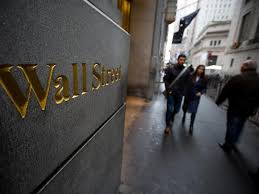The Average Wall Street Salary Is Up to $422,500. On Main Street, It’s Much Less

Ten years ago, stunned employees of Lehman Brothers walked out onto the streets, boxes in hand, after their company collapsed. These days, Wall Street workers have something to celebrate: Compensation in the financial industry is the highest it’s been in a decade.
A report from the New York State Comptroller said Monday that the average Wall Street salary rose by 13% in 2017 to $ 422,500, the highest compensation since 2008. Much of that boost in take-home pay came from bonuses, which rose 17% last year to $ 184,000 on average, which was also the highest in a decade.
The financial crisis precipitated by Lehman’s collapse has reshaped the American economy. While Wall Street banks struggled for a few years after the crisis, many workers in other industries are still feeling its stifling effects. Median household income rose 1.8% in 2017 to $ 61,372, or about one-seventh the average salary on Wall Street.
In general, workers who rely on wages for income have fared poorly in comparison to those who see most of their income from investments. Stock indexes are trading near record highs, with profits at U.S. companies rising by about 25% so far in 2018. The securities industry is sharing in those surging profits, with their pretax income reaching $ 24.5 billion in 2018 and another $ 13.7 billion in the first half of 2018.
Those figures suggest that 2018 will bring even bigger bonuses and salaries to the people who work on Wall Street. And there’s more of that work to go around. After the initial layoffs, financial services firms have added 10,600 jobs in the past eight years, bringing the total workforce to 176,900.
That’s not quite as high as it was in 2007, but as long as the financial markets stay strong, Wall Street employment will soon be where it was in the months before the markets crashed.


